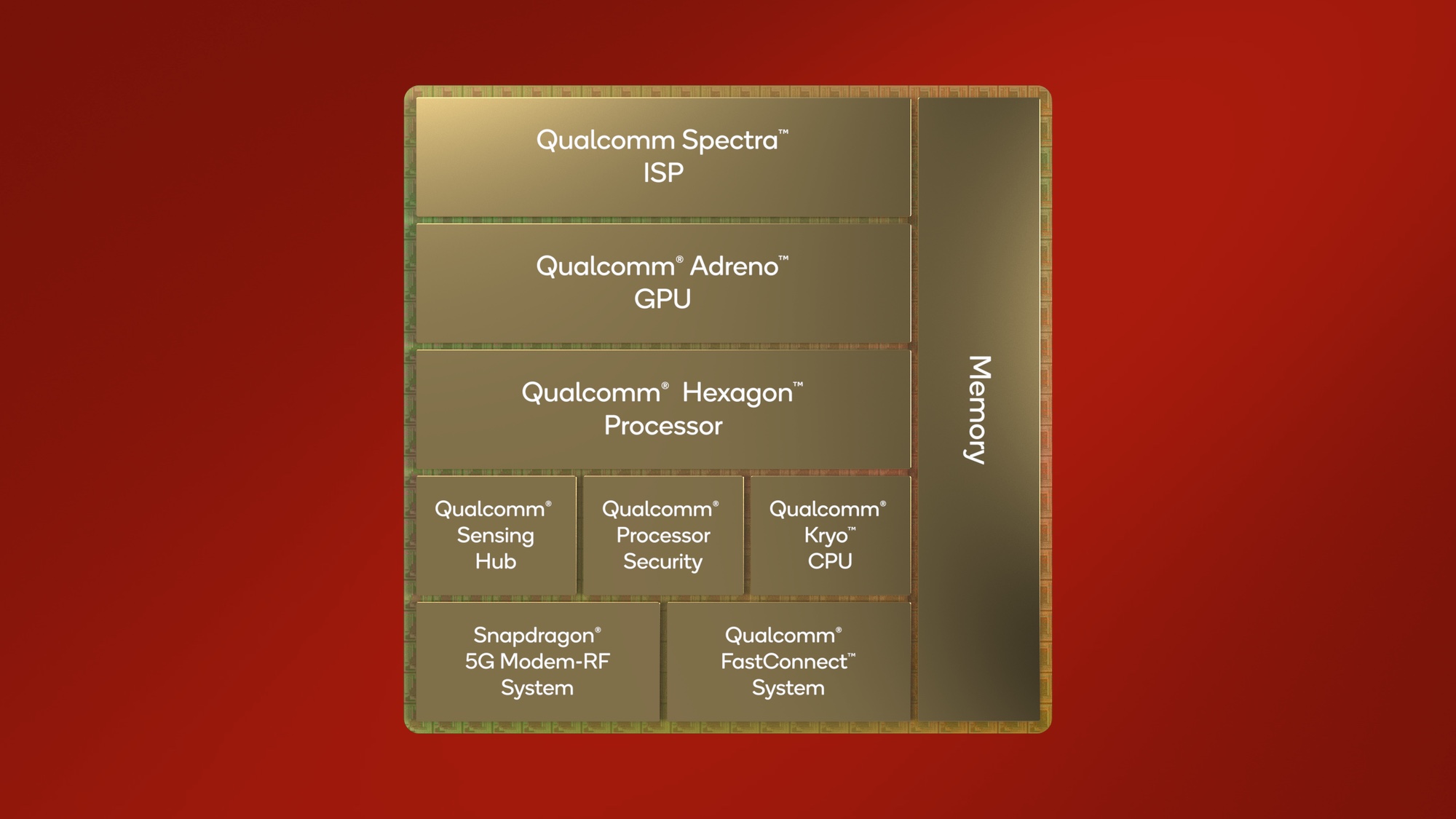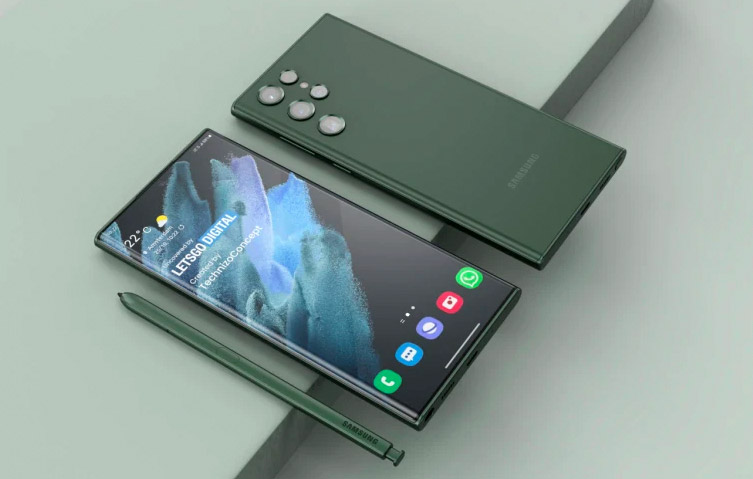Snapdragon 8 Gen 1: Meet the superchip that should power the Galaxy S22
Here's what you need to know about the Snapdragon 8 Gen 1 chipset from Qualcomm

Qualcomm's Snapdragon 8 Gen 1 mobile chipset is here and ready to power the next generation of Android flagships. And it could arrive in phones sooner than you might think.
Though Qualcomm traditionally reveals its premium system-on-chip around this time every year, the silicon itself doesn't show up in phones until early the next year — usually in Samsung's new Galaxy S flagship.
But that could be changing with the Snapdragon 8 Gen 1, as Qualcomm says that devices using the new silicon will begin to appear by the end of 2021. With Samsung's Galaxy S22 not expected to make an appearance until February of 2022, that likely means other phones featuring the Snapdragon 8 Gen 1 are going to appear before then.
Regardless of which Android phone debuts first with the Snapdragon 8 Gen 1 chipset, Qualcomm is promising big advances in cameras, gaming and artificial intelligence. The emphasis on these particular aspects of the mobile experience isn't an accident — they're key elements in what people look for in a mobile device, so Qualcomm wants to establish its Snapdragon brand as the leader in those particular areas.

The Snapdragon 8 Gen 1 debuts at an interesting time for mobile processors. Last month saw the debut of Google's Pixel 6 lineup, the first Google phones to skip using Qualcomm silicon in favor of a new Tensor chipset developed by Google. While Tensor more or less matches the performance of the Snapdragon 888, the predecessor to the Snapdragon 8 Gen 1, where Google's chip really shines is in how it uses machine learning to enable features powered by on-device intelligence such as more accurate voice dictation and superior call screening.
That, coupled with Apple's success producing high-performance chips for its own iPhone lineup, ratchets up the pressure on Qualcomm, long the dominant chip maker for mobile phones. Think of the Snapdragon 8 Gen 1 as the company's first chance to respond to these challenges. Here's what's new.
Snapdragon 8 Gen 1 performance
With its emphasis on other parts of the Snapdragon 8 Gen 1 system-on-chip, Qualcomm isn't really dwelling on performance gains offered by the new silicon. Still, expect the Snapdragon 8 Gen 1 to improve upon what the Snapdragon 888 offered, even if Apple's A series chips remain the benchmark champ.
Get instant access to breaking news, the hottest reviews, great deals and helpful tips.
For starters, the Snapdragon 8 Gen 1 is built on a 4-nanometer process, compared to the 5nm Snapdragon 888. The smaller size means more transistors can fit onto the chipset, boosting power efficiency, and giving the Snapdragon 8 Gen 1 a leg up on its predecessor.

To that end, the Kryo CPU included with the Snapdragon 8 Gen 1 figures to be 20% faster and 30% more power efficient than the Snapdragon 888. Applying that power boost to the Geekbench 5 numbers we've seen from Snapdragon 888-powered phones, that could theoretically put the new chip very much in the ballpark of speed numbers produced by A15-powered iPhone 13 family. Of course, only actual benchmarks will tell the true story. (To that end, the first Snapdragon 8 Gen 1 benchmarks are out, showing only modest improvement from the Snapdragon 888.)
The Adreno GPU on the Snapdragon 8 Gen 1 should see similar gains over its predecessor — Qualcomm's promising a 30% improvement in speed and 25% more power savings. That should allow the Snapdragon 8 Gen 1 to remain the go-to silicon for the best gaming phones, though the true improvements to gaming include more than just speedier performance, as we'll discuss shortly.
Snapdragon 8 Gen 1 camera features
Besides the CPU and GPU, Qualcomm's system-on-chip includes an image signal processor (ISP) that powers many of the camera features you'll find on smartphones. For the Snapdragon 8 Gen 1, Qualcomm's adding an 18-bit ISP — a boost from the 14-bit ISP previously featured on the Snapdragon 888. As a result, the new ISP can capture 4K more camera data than its predecessor for greater dynamic range, color and sharpness.
That ISP — part of what Qualcomm is billing as its Snapdragon Sight technologies — also happens to be faster. It can capture images at 3.2 gigapixels per second, a boost from the 2.7 gigapixel-per-second speed found in the Snapdragon 888's ISP. That would allow you to double the number of burst shots you can capture in a second to 240.
The ISP on the Snapdragon 8 Gen 1 supports 8K HDR video capture — Qualcomm says that's the first time such a feature has been available on mobile — and there's a new Bokeh engine to add soft backgrounds to videos shot on mobile devices.
The Snapdragon 888 introduce a triple ISP to Qualcomm's chipsets, but there's now a fourth ISP on the Snapdragon 8 Gen 1. It's there to support always-on functionality with low-power consumption so that a phone's front camera can always be at the ready to unlock the device when it detects your face.
Snapdragon 8 Gen 1 gaming features
Recent Snapdragon chipset introductions have touted Qualcomm's Snapdragon Elite Gaming features, which aim to bring desktop-quality gaming experiences to mobile devices. That's continuing with the Snapdragon 8 Gen 1, which introduces a trio of noteworthy gaming-focused enhancements.

The new Adreno Frame Motion engine looks to boost the number of frames per second that Snapdragon 8 Gen 1 devices can churn out without an equal boost to power consumption. Qualcomm says the new feature can double the amount of frames while consuming the same amount of energy as before.
Volumetric rendering is a desktop-style capability brought to phones that promises to bolster the realism of certain types of graphics. Specifically, the feature should make effects like fog and smoke appear more realistic.
Another gaming feature — Variable Rate Shading Pro — should appeal to game makers. It allows them to greater control for fine-tuning game performance.
Snapdragon 8 Gen 1 artificial intelligence
With artificial intelligence behind an increasing number of features that smartphone users take for granted, expect Qualcomm to go into heavy detail on just how the Snapdragon 8 Gen 1 measures up. It starts with the 7th Gen AI Engine which doubles the performance and the size of the shared memory of the engine's tensor accelerator. Overall, Qualcomm says the new AI Engine is 4x faster than its predecessor while improving power efficiency by 70%.
More than just raw numbers, though, Qualcomm is talking up AI-powered experiences. The Snapdragon 8 Gen 1 integrates Leica Leitz Looks filters for improving bokeh effects and colors on images. Hugging Face's natural language processing tools can analyze and prioritize any notifications your phone receives. Qualcomm also says it's working with Sonde Health to use on-device AI to analyze user voice patterns to spot any potential health risks, such as asthma or depression.
Snapdragon 8 Gen 1 connectivity
When it announced the new naming scheme for its chipsets, Qualcomm also said it would no longer single out 5G connectivity for its mobile offerings — at this point, 5G connectivity is a given. And on the Snapdragon 8 Gen 1, it should be better than ever.

The chipset features a 4th-gen Snapdragon X65 5G modem system capable of hitting 10 Gbps speeds. (Now if only 5G networks would approach that theoretical speed limit.) In addition to increased support for more global networks, frequencies and bandwidths, the modem is the first to feature 5G uplink carrier aggregation, giving upload speeds a boost.
In addition to 5G, the Snapdragon 8 Gen 1 includes Qualcomm FastConnect 6900 Mobile Connectivity System with support for Wi-Fi 6 and 6E. Wireless speeds can reach a theoretical 3.6Gbps as a result.
Snapdragon 8 Gen 1 phones

So far, OnePlus, Oppo, Motorola, Nubia, Sony, ZTE, Xiaomi, Honor and others have committed to featuring the new Snapdragon in their phones. Some of those phone makers have subsequently released more details, with the Xiaomi 12 likely to be the first phone to feature the new chipset. But Motorola beat Xiaomi to the punch, with the Edge X30 being the first phone to have the new chip. Unfortunately, it's China-only.
None of the phones mentioned above are likely to reach the U.S., though. But the OnePlus 10 will, and OnePlus co-founder Carl Pei has confirmed that a next-generation OnePlus phone will use the Snapdragon 8 Gen 1. We can only assume he's referring to the OnePlus 10.
Samsung typically uses the latest Snapdragon flagship silicon in its Galaxy S phones, and we wouldn't expect the Galaxy S22 to be any different. If anything, Qualcomm expects to be in more Galaxy S phones in 2022, and you'd have to think the Snapdragon 8 Gen 1 will play a big part in that.
Snapdragon 8 Gen 1 outlook
We'll have to benchmark the Snapdragon 8 Gen 1 ourselves to see how the new chipset's performance compares to Google's Tensor and Apple's A15 Bionic chip. More importantly, we'll need to test out a Snapdragon 8 Gen 1-powered device to see how the promised camera, gaming and AI improvements manifest themselves in a shipping product. That, more than anything, will determine whether Qualcomm can keep its place atop the mobile chip-making market.
Philip Michaels is a Managing Editor at Tom's Guide. He's been covering personal technology since 1999 and was in the building when Steve Jobs showed off the iPhone for the first time. He's been evaluating smartphones since that first iPhone debuted in 2007, and he's been following phone carriers and smartphone plans since 2015. He has strong opinions about Apple, the Oakland Athletics, old movies and proper butchery techniques. Follow him at @PhilipMichaels.

